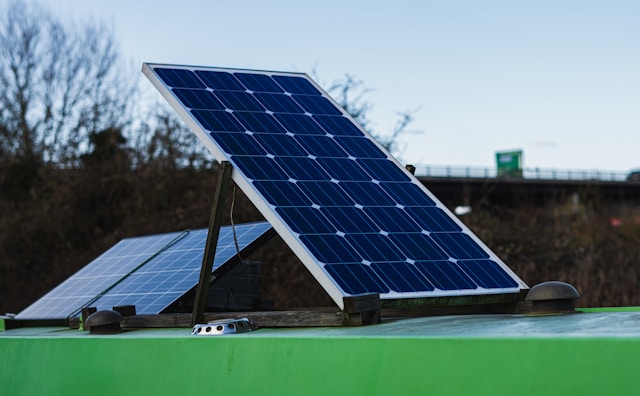Are you ready to switch over to solar energy power and wondering which type of solar panel to use and the factors to consider before decicing which one?
In this brif article,we will look at the different types of solar panels, their advantages and use cases.
1. Monocrystalline Solar Panels
Monocrystalline panels are made from a single crystal structure, usually silicon. This manufacturing process results in high-efficiency panels.
-Advantages: High efficiency, sleek design, and better performance in low-light conditions.
– Use Cases: Ideal for limited roof space or installations where high efficiency is crucial, such as residential rooftops.
2. Polycrystalline Solar Panels
Polycrystalline panels are made from multiple crystal structures, giving them a speckled appearance.
– Advantages: Cost-effective production, good efficiency, and a balance between performance and affordability.
– Use Cases: Commonly used for residential and commercial installations where cost efficiency is a significant factor.
3. Thin-Film Solar Panels
Thin-film panels use layers of semiconductor materials deposited on a substrate, allowing for flexibility and versatility in design.
– Advantages: Lightweight, flexible, and cost-effective to produce. Suitable for unconventional installations and applications.
– Use Cases: Often used in large-scale solar farms, building-integrated photovoltaics (BIPV), and portable solar devices.
4. Bifacial Solar Panels
Bifacial panels have solar cells on both sides, allowing them to capture sunlight from both the front and rear.
– Advantages: Increased energy yield, especially in environments with reflective surfaces like snow or sand.
– Use Cases: Suitable for installations with reflective surfaces, such as snow-covered areas, or when mounted on elevated structures.
5. Cadmium Telluride (CdTe) Solar Panels
CdTe panels use a thin layer of cadmium telluride as the semiconductor material.
– Advantages: Cost-effective production, good performance in high-temperature conditions.
– Use Cases: Commonly used in large utility-scale solar projects.
6. Amorphous Silicon (a-Si) Solar Panels
Amorphous silicon panels use non-crystalline silicon, providing flexibility and a unique appearance.
– Advantages: Flexible, lightweight, and suitable for curved or irregular surfaces.
– Use Cases: Often used in small-scale applications, portable solar chargers, and building-integrated designs.
7. Organic Photovoltaic (OPV) Solar Panels
OPV panels use organic compounds as the semiconductor material, offering flexibility and potential for low-cost production.
– Advantages: Lightweight, flexible, and potentially lower production costs.
– Use Cases: Early-stage technology used in small-scale applications, portable devices, and experimental projects.
Each type of solar panel has its own set of advantages and considerations. The choice of which type to use depends on factors such as efficiency requirements, budget constraints, available space, and the specific application or environment in which they will be deployed.


Trackbacks/Pingbacks